Up until the time of Christopher Columbus, the world was divided in two, both geographically and culturally. Planet Earth was made up of two distinct “universes” that had no idea about the existence of the other. The Old World, comprised of Europe, Asia, and Africa, was the cradle of modern civilization and all its three continents exchanged goods, ideas, technologies, and people with each other for thousands of years.
The New World on the other hand, isolated by two oceans (the Atlantic and Pacific) from the Old, developed separately and in its own particular way in terms natural habitats, wildlife, and human culture. This being the case, there are still many secrets and forgotten histories yet to be uncovered. The more archaeologists and historians look into the matter, the more surprises they unearth, turning our previous rock-solid facts about this place into mere misconceptions. Here are just a few historic secrets about the American continents you probably didn’t know about.
10. The First Americans Were Australian
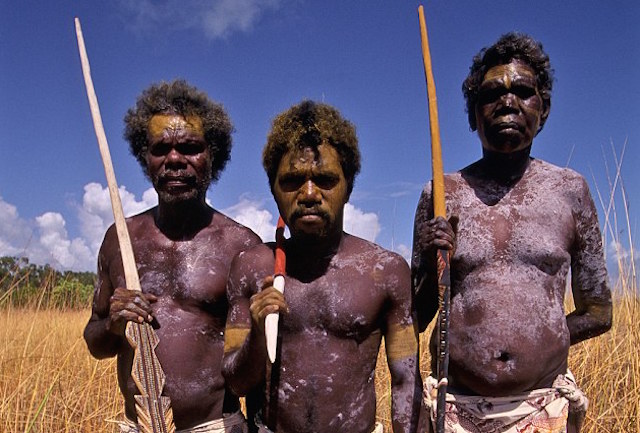
When the ancestors of Native Americans first crossed the Bering Strait from Siberia to Alaska at the end of the last ice age some 12,000 years ago, they didn’t arrive in an empty wilderness. Fairly recent discoveries have shown that humans have been living in the New World for a far longer period of time than anyone could have previously imagined.
Archaeological digs in Serra Da Capivara National Park, in northeastern Brazil have unearthed a human skull belonging to a 20 something year old girl. What’s so peculiar about it is that it doesn’t look anything like the typical Mongoloid skull of Native Americans. Richard Neave from the University of Manchester, UK, is a forensic artist and was in charge of reconstructing the face. The results were shocking: “It has all the features of a negroid face,” says Dr. Neave. In fact, it closely resembles the characteristics shred by native people living around the Indian Ocean basin; especially Australia and Melanesia. Australian Aborigines are in fact the descendants of early man leaving Africa some 100,000 years ago and reaching the island continent some 40,000 years later.
Moreover, near where the skull was dug up, a series of cave paintings were discovered, depicting these Paleoamericans together with Giant Armadillos, which went extinct before the start of the last ice age. The real question of how they got there now remains. One possibility is that they also crossed the Bering Strait, before the Asian people did. This is highly unlikely since Alaska and Canada would have been covered by a huge mountain of ice up until the end of the ice age. The only other possibility would have been by boat, across the Pacific Ocean. This seems counter intuitive given the huge distances, but it was since been proven possible. Not to mention the other set of cave paintings, this time from northern Australia, depicting people in a boat especially designed for ocean waters and dating back between 17 to 50,000 years.
The fate of these first Americans seems too grim as the number of negroid skulls drops drastically between 7,000 and 9,000 years ago. This coincides with the arrival of the Mongoloids to the region and it is believed that they eventually wiped them out.
9. Next Came the Stone-Age Europeans

If the previous point wasn’t enough to take in, some further evidence seems to indicate that the next peoples on the American continents were not the Mongoloids crossing the Bring Strait, but rather some Solutrean tribes from the Iberian Peninsula and southern France. This event is believed to have happened some 26,000 years ago; 11,000 years before the Asians. The similarity in style of the stone tools found in all six sites across the East Coast, with those of the Solutrean people of Europe, made historians believe of a possible connection.
Radiocarbon dating of the soils in which these tools were found, all point to periods older than 20,000 years. One particular 8 inch stone blade was discovered 240 feet underwater, some 60 miles east of the Virginia cape, by a scallop trawler. It was accompanied by a 22,760 year old mastodon tusk and molar. Moreover, the flint blade was identified as originating from France. During the ice age, the oceans were lower than they are today, and that spot was actually land near the coast. This is also the reason why so few artifacts have been found so far, as most of them are now under the Atlantic Ocean.
The theory of how these Europeans Stone-age men got there sounds familiar. During the ice age, the North Atlantic was pretty much frozen over and like the Siberians; they crossed into North America, either on foot or by following the ice on boats. Food was plentiful on the ice as they could hunt seals and arctic birds, similar to the Inuit people of modern times.
Their fate was rather similar to the Australians in America as they were either assimilated by the new coming Mongoloid people or were driven off from lack of resources. DNA extracted from an 8,000 year old skeleton from Florida has revealed a high number of genetic markers found in Europeans and not Asians. The reason why the Mongoloids got the upper hand with both the Solutrean people and Australians was their timing. The timeframe for crossing over to the New World was larger than that of the Europeans and the climatic conditions were better, allowing for a much larger population to come over and take the land for their own.
8. Geography Doomed Native Americans

From this point onwards we will call “Native American” those people who Christopher Columbus found when he reached the New World in 1492. For the last 500 years in human history, the Native Americans had a pretty bad run. In a matter of decades these people, who basically ruled over two entire continents, were all but wiped out with the arrival of the new colonists.
In what later became known as the Columbian Exchange, more than 95% of all people living in the New World died out. This was one of the largest human extinctions in history and it wasn’t caused by direct conflict, but rather by disease. Because of the long isolation between the two worlds, the Native Americans never before came in contact with smallpox and thus had no immunity to it. Because disease travels much faster than even ships, by the time the Mayflower landed at Plymouth Rock in 1620, Native Americans were far fewer in number, leading the pilgrims to believe that the New World was largely uninhabited and up for grabs.
The reason why the Europeans had an immunity to smallpox and other diseases was because of their livestock. Being around sheep and pigs since birth, gave the newcomers a defense against the disease. Smallpox can trace its origins to these livestock with which Europeans were in contact with for hundreds of years.
While the Middle East and China were blessed with many plants and animals viable for domestication, the Americas were not so fortunate (the same applies to sub-Saharan Africa and Australia). Here only the turkey and the llama could be domesticated which put the natives at a serious disadvantage. The llama, besides its wool, was pretty much useless in terms of human development. While the Europeans had cattle and horses (which were the backbone for human agriculture and civilization), the llama couldn’t carry weights bigger than a mere 100 pounds. Not to mention the horse; which was the war machine of choice for thousands of years (up until the invention of the tank in WWI).
Finally we turn our attention to technology, which rarely develops and evolves by itself. Because Europe and Asia were in contact since ancient times, ideas and technologies transferred from one place to the other, giving them room and different cultural perspectives to evolve. With gunpowder from China and battle armor from the Parthians, the Europeans became unstoppable warriors and could easily defeat the technologically inferior and disease ridden Native Americans.
7. The Horse and Camel

The horse and camel are two animals on the backs of which people from the Old World built their empires and brought the world to what we see today. The Europeans of the 15th and 16th centuries were able to quickly conquer the Native Americans from atop their horses and were regarded as gods because of them. The Aztecs believed that Hernan Cortez and his men were deities, partially because of some coincidental prophecies and partially because of their horses. In fact, the natives believed that the horse and its rider were only one divine being. This was one of the major reasons why so many native tribes eagerly followed the Spaniards, in order to take down the Aztec Empire who was ruling over them.
In what can only be described as an ironic twist of fate, both the horse and camel originated from North America. The genus Equus of which modern horses, zebras and asses belong to, is thought to have emerged in North America some four million years ago. Then, one or two million years later, it’s believed to have crossed into Eurasia via the Bering land bridge. At the end of the Pleistocene some 13,000 years ago, the horse died out in North America, but it already spread to the Old World by that time.
Camels on the other hand came from the arctic regions and archipelagos of present-day northern Canada some 3.5 million years ago. Oddly enough, what makes a camel suited for life in the desert is also good for surviving harsh winters and sub-zero temperatures. Their wide, flat feet which help present camels to not sink into the sand, do the exact same thing on snow. A hump of fat on their backs, which can keep a camel going without food or water, is a godsend in a winter wasteland. Also, their big eyes are specially made to see in dim light, which happens to be the case in arctic regions when half the year is covered in darkness. Similar to the horse, the camel died out in North America and crossed into Eurasia, but also made its way to South America and became the llamas and alpacas of today.
6. What Happened to the Megafauna?

For a while now, scientists and archaeologists believed that the megafauna of the Americas and Australia died off because of climate change and the warming of the planet after the last ice age. More recent discoveries seem to point out that this was not the case. More and more, paleontologists begin to point their fingers at people coming over from the Old World.
“Creatures like megatherium, the giant sloth, and the glyptodon, a car-sized species of armadillo, disappeared in North and South America about 10,000 years ago, when there were major changes to climates – which some scientists believe triggered their extinctions,” said Yadvinder Malhi, professor of ecosystem science at Oxford University. “However, it is also the case that tribes of modern humans were moving into these creatures’ territories at these times – and many of us believe it is too much of a coincidence that this happened just as these animals vanished. These creatures had endured millions of years of climate change before then, after all. However, this was the first time they had encountered humans.”
There’s a good chance that the people who crossed the Bering land bridge into America were also the ones responsible for wiping out, not only the mammoths and mastodons, but also the remaining wild horses and camels of the region. We tend to believe that humans only began to have a big impact on the environment after the invention of agriculture, but pushing an entire herd of mammoths off a cliff just so you can take the meat from one of them can also do the job.
5. Who Built the Western Hemisphere’s Biggest Pyramids?
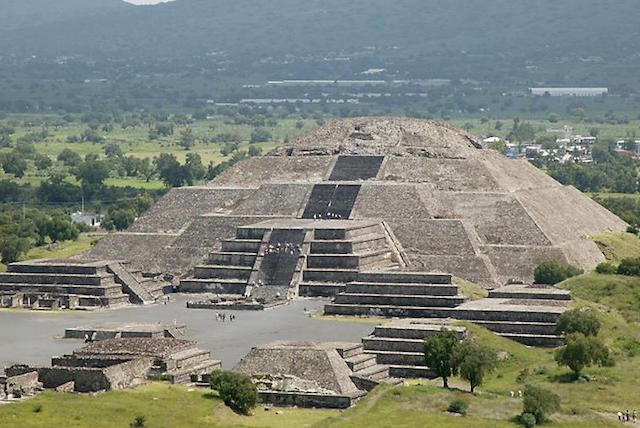
Just 30 miles away from Mexico City, the largest pyramid complex in the Americas is situated. Given the fact that the former capital of the Aztec Empire, Tenochtitlan, was where the current capital of Mexico is, it would seem obvious that Teotihuacan was also built by the Aztecs. This could not be further from the truth. They were however the first to discover the ghost city, springing up as if in the middle of nowhere. Seeing the magnitude of the pyramids and of the entire complex, they believed that this was “the place where the gods were created” – which in the Nahuatl language (Aztec) is translated to “Teotihuacan”. They even made regular pilgrimages here. Just imagine stumbling upon such a sight in a time when the world looked totally different and “magic still existed”. That’s how the Aztecs must have felt when they came across Teotihuacan.
The largest monument there, “The Pyramid of the Sun” (name given by the Aztecs), with its 720 by 760 ft. base and 216 ft. height, was the tallest edifice in the Western Hemisphere up until the 1900’s. Together with the Pyramid of the Moon (141 ft. tall) and the entire complex of about 8 sq. miles, Teotihuacan could support a massive population of 100,000 people. The city would have been at its peak between 100 BC and 650 AD, with the pyramids being built around 200 AD. The Aztecs got there in the first half of the 15th century, 800 years after the city’s demise.
Who were the people who built it? Some say that they were a mixture of Maya, Mixtec, and Zapotec cultures while others believe that a wave of immigrants descended into the Teotihuacan Valley after a volcano eruption and either built the city or heavily bolstered an already existing one. The truth is that nobody knows for sure. With only about 5% of the site being excavated, the majority of facts come from the Aztecs, who had no idea themselves.
Human and animal remains were discovered at the bases of the pyramids, leading archaeologists to believe that these people also practiced sacrifice as offerings to the gods. Historians believe that this was the reason for the city’s demise, as the poorer classes held an uprising against the elite. But, “Rather than asking why Teotihuacan collapsed, it is more interesting to ask why it lasted so long,” George Cowgill, an archaeologist at Arizona State University, says. “What were the social, political, and religious practices that provided such stability?”
4. Who Were the Real Barbarians Here?

When the Europeans first began to come in contact with the natives of the New World, they also saw glimpses of their culture and traditions. And what they saw terrified them. So much so, that Hernan Cortez and his men, on their way to Tenochtitlan (the Aztec capital), believed the natives to be bloodthirsty savages worshiping demons. This is not surprising given the fact that the Amerindian culture is filled with human and even child sacrifice, blood, and not to mention cannibalism. Seen from the conquerors’ eyes, these practices were the epitome of evil and felt it their utmost duty to stop them at all costs. And while they were right to a large extent, this is not by far the whole story.
The biggest problem here is the huge cultural differences between the European ideology (and indeed the modern day Western view) and the people of Pre-Colombian America. Like the conquistadors and those who followed, we can only hint at what the Aztecs felt and believed the world to be, even after knowing the story behind their faith.
According to Aztec myth, the world was made in eras –or suns- and each time an era ended, in did so in destruction. When the forth age came to a close the gods gathered at Teotihuacan to see what can be done. In order to give the sun energy to rise once more, the gods jumped into a fire and cut out their own hearts, sacrificing themselves so humanity can live again. This set the stage for the people to “pay back a debt to the gods” for giving them a chance at survival. They believed that, without a constant flow of sacrificial blood, the sun would not rise the next morning and the world would end in eternal darkness. By following this premise, human life and especially blood, were sacred to the Aztecs. Spilling it needlessly was seen as a great offence to the gods and to life itself. This can be seen in the serene and fair way they lived out their lives within their own society (much more “democratic” than the Europeans at the time) and even how they waged war with others.
When fighting their enemies they rarely killed them in battle and instead opted for capturing them alive so they can offer them as sacrifice. The people being sacrificed were treated as heroes and were believed to receive a royal welcome in the afterlife. This view was most certainly shared by the people who were being sacrificed.
This is what Christopher Columbus had to say about the people he first met in the Americas, in letter to Luis de Santangel (a patron who helped fund the first voyage): “they are artless and generous with what they have, to such a degree as no one would believe but him who had seen it. Of anything they have, if it be asked for, they never say no, but do rather invite the person to accept it, and show as much lovingness as though they would give their hearts.” He later says this in his journal: “These people are very unskilled in arms… with 50 men they could all be subjected and made to do all that one wished.”
Which, by the way, happened soon after.
3. Cahokia and the Mound Builders of North America
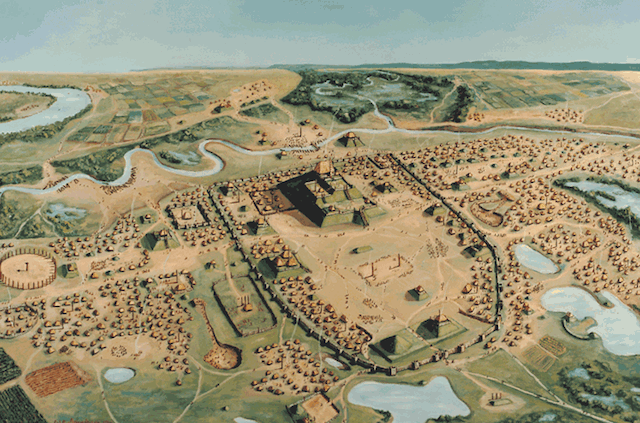
A popular misconception about the Amerindians of North America is that they all lived in tepees and followed a hunter-gatherer lifestyle. This image is so engrained into the people’s consciousness that the site of the largest Native American city in the US is crossed by a four-lane highway right through its heart. This city is called Cahokia or “The City of the Sun” and is located close to where the Illinois and Mississippi Rivers meet in the state of Illinois, just across the river from St. Louis. This part of the United States is one of the most fertile areas and was also home to one of the largest civilizations on the continent; the Mississipians or more commonly known as the Mound Builders.
Cahokia was at its peak between 1050 and 1200 A.D, and had a population of 20,000 people; more than most European cities, including London itself. It spanned over six square miles (16 square kilometers) and had a total of 120 earth mounds. The first European explorers initially believed these mounds were carved by retreating glaciers and when they realized they were man made, attributed them to the Phoenicians, the Vikings and even a lost tribe of Israel, but never to the Native Americans themselves.
The city was carefully planned, with central plazas, elite compounds and residential areas. Out of the original 120 mounds, only 70 survive to this day and the biggest, the Monks Mound, is the largest prehistoric earthen structure in the Western Hemisphere. It’s rising to 100 feet (30 meters), covers more than 14 acres (6 hectares), and contains more than 25 million cubic feet (700,000 cubic meters) of earth. This earth was all gathered there by hand in willow baskets, 50 pounds at a time.
Little is known about these people since almost nothing can connect them to tribes before or after Cahokia. Their culture spread from the Great Lakes to Florida and from the Appalachians to the Rocky Mountains. They flourished thanks to trade, but what made them the greatest civilization in North America is maize. The Mississipians had a great culture with many traditions and decorative objects. They even practiced human sacrifice it the name of their “Corn Goddess” in order for her to provide a stable crop.
2. Poverty Point: The Only Settlement Built by Hunter-Gatherers
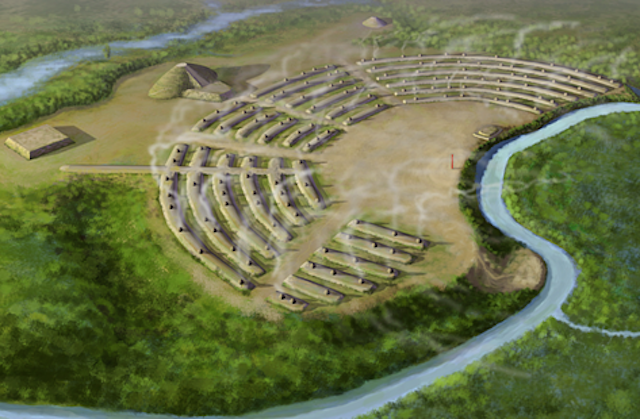
The Poverty Point site in northern Louisiana is unique in the world as being the only permanent settlement to be built by a hunter-gatherer society. Usually, agriculture and animal husbandry are at the base of any settlement, but this was not the case for Poverty Point, which was founded almost 4000 years ago in 1730 BC. This was no ordinary or temporary village either, but rather a city covering 4 sq. miles and lasting more than 500 years.
Moreover, it was built after a master plan and used advanced engineering techniques that would not be duplicated for thousands of years. The city was formed on six concentric earthen embankments which prevented erosion and carried away waste, keeping the homes on top of them clean. The embankments were crossed by five aisles which made for easy access. At the center was a major plaza, while way in the back, behind the embankments, a huge earth mound was built. There was even a ball court present at the edge of the city, along with four another, smaller mounds at the corners of the settlement.
Located at the edge of the Mississippi River’s Delta, the people caught fish, hunted deer and other wild animals, and foraged for wild fruits and plants for their food. Nothing that out of the ordinary here, but they did however rely on trade which, given the period, is amazing. Objects have been uncovered at Poverty Point, which were manufactured thousands of miles away.
1. Russell Cave: Longest Continuous Human Occupation in the US
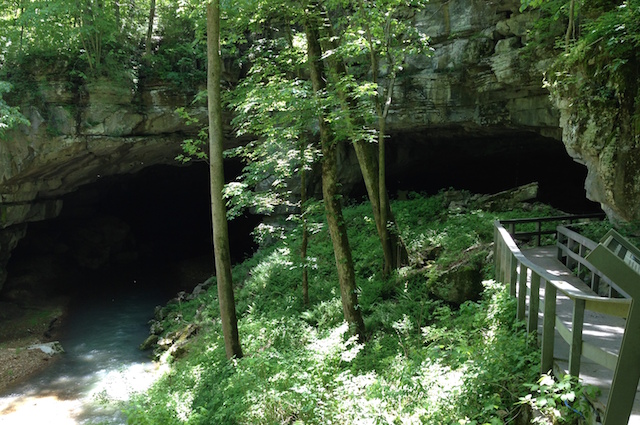
Caves have always made perfect natural shelters and Russell Cave in northern Alabama is no exception. This place however, has been a continuous home to people for over 8,000 years. It was declared a national monument by President John F. Kennedy in 1961 and is frequented by tourists from all over the world. Roughly 11,000 years ago the entrance was created after a sinkhole opened it up. Two thousand years later, after rocks had fallen from the roof, the floor went above water level and began to be inhabited by humans. With a fresh water spring popping out just in front of the entrance, together with the cave stone – perfect for tools and weapons – made Russell Cave a perfect home for Native Americans living in the region.
Archaeological excavations have unearthed human remains dating back to 6,000 BC. Fire pits, stone tools and weapons, as well as animal remains were also discovered here. With the arrival of the Mississippian Period (approximately 1,000 years BCE to ca. 1550 AD), people started using agriculture and slowly moved out of the cave. They didn’t abandon it completely as they used it in winter as a hunting outpost. A metal fish hook was also unearthed, showing that the cave was in use even after European contact was made. The Cherokees were the ones who used it last, as they were living in the area in the late 18th century, when white colonists settled here.
3 Comments
Pretty sure that whole “Aztecs thought the white guys were gods” myth was pretty thoroughly disproven a few hundred years ago.
Oh, I just KNEW that this list would include a slam piece on those evil white discovers. Boy, they sure must’ve been some effective “barbarians.”
Because the peoples and areas they discovered are still filthy, 3rd world crapholes and, ironically, those people migrate–often illegally–to the lands from which the discovers hailed.
Hmmm, amazing, isn’t it? Because looking at those countries, those savages haven’t changed much in 2 thousand years…
i really, really hope the myth of “aztecs only waged wars to capture people” dies off someday
its the equivalent of claiming medievals battles were just to get ransoms
the aztec “sword”(Macuahuitl) was good enough to cut a horse open, not to mentions most of their armor was just to distinguish between common soldiers and different orders